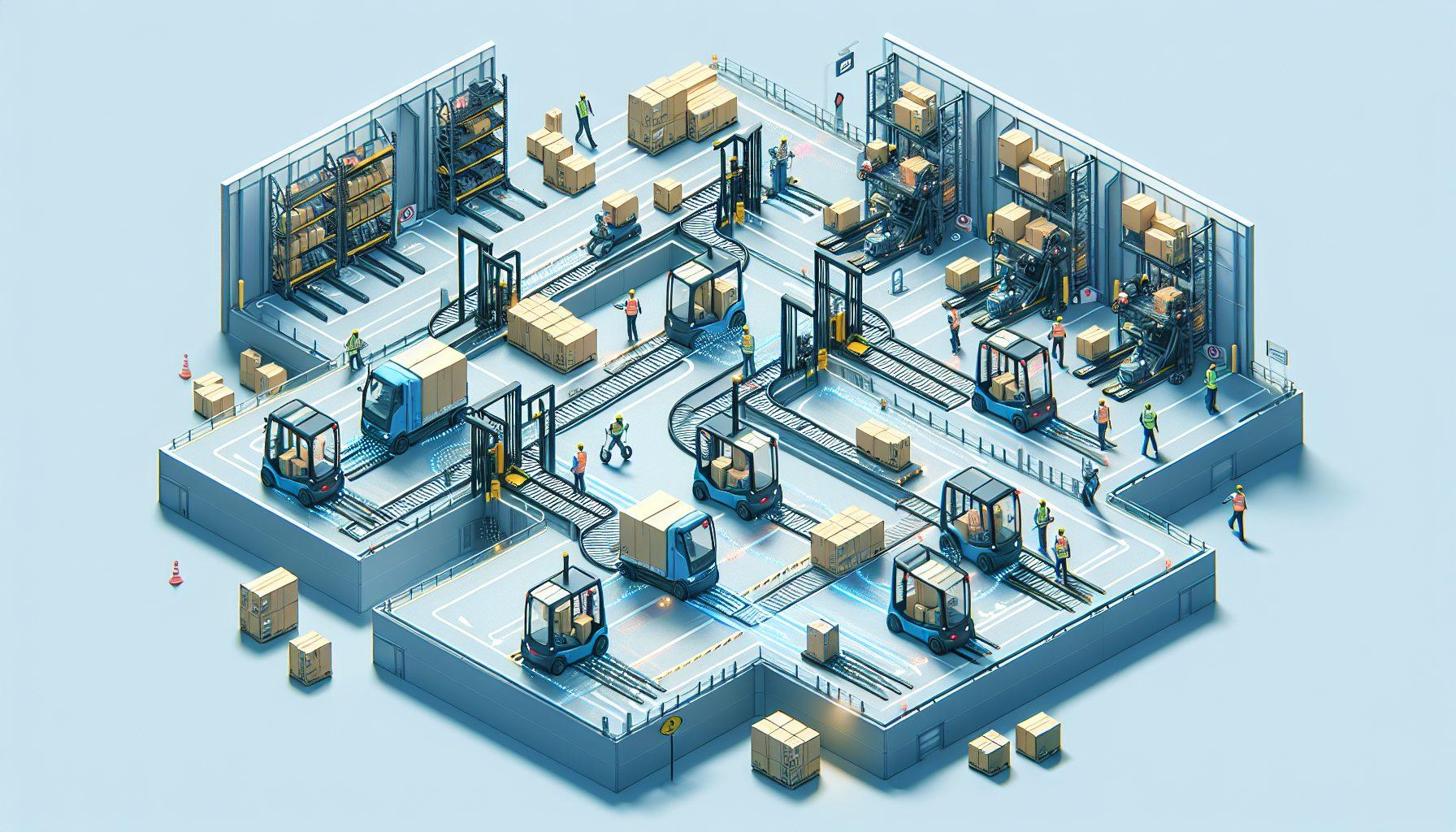Warehouse operations are a critical component of any supply chain, and optimizing these operations is crucial for businesses striving to stay ahead in today’s competitive market. One technology that is revolutionizing warehouse operations is Automated Guided Vehicles (AGVs). AGVs, also known as warehouse robots, are autonomous vehicles that can navigate through the warehouse environment to perform various tasks.
The Benefits of AGV Deployment in Dock Operations
Dock operations play a vital role in the smooth functioning of a warehouse, as they involve the loading and unloading of goods, coordination with carriers, and ensuring timely and accurate shipment processing. AGV deployment in dock operations can bring significant benefits to warehouses, enhancing safety, efficiency, and productivity.
1. Increased Efficiency
By utilizing AGVs in dock operations, warehouses can streamline the entire loading and unloading process. AGVs can efficiently transport goods from the inbound or outbound trailers to the designated storage locations within the warehouse. The automated nature of AGVs eliminates the need for manual labor, resulting in increased efficiency and reduced dependence on human resources.
This increased efficiency translates into faster turnaround times for trucks at the dock, reducing waiting times and improving overall operational throughput. AGVs can operate 24/7 without fatigue, ensuring round-the-clock productivity and maximizing warehouse efficiency.
2. Improved Safety
Safety is a top priority in any warehouse operation. AGVs are equipped with advanced sensors and collision avoidance systems that enable them to navigate safely around people, equipment, and obstacles. This reduces the risk of accidents and injuries in the work environment.
Furthermore, AGVs adhere to strict safety protocols and operate with a high level of accuracy, eliminating human errors that could occur during the loading and unloading process. This not only protects employees but also prevents potential damage to goods and equipment, increasing overall safety in dock operations.
3. Optimal Space Utilization
Warehouse space is valuable, and efficient space utilization is essential for optimizing operations. AGVs are designed to maneuver in tight spaces and can operate in narrow aisles. They can optimize the layout of goods within the warehouse, ensuring maximum use of available space.
AGVs can also autonomously navigate through the warehouse, utilizing route optimization algorithms to find the most efficient paths. This eliminates the need for human intervention and reduces the risk of congestion or bottlenecks in the dock area, further optimizing space utilization.
4. Enhanced Tracking and Monitoring
AGVs are equipped with advanced tracking and monitoring systems that provide real-time visibility into dock operations. Warehouse managers can track the movement of goods, monitor loading and unloading times, and identify potential bottlenecks or inefficiencies.
By collecting and analyzing data from AGVs, warehouse managers can make data-driven decisions to improve operations, optimize resource allocation, and enhance overall performance. This level of visibility and control allows for proactive management and continuous improvement in dock operations.
Conclusion
AGVs, deployed in dock operations, offer numerous benefits that can significantly improve the overall efficiency, safety, and productivity of warehouse operations. The increased efficiency, improved safety, optimal space utilization, and enhanced tracking and monitoring provided by AGVs can help warehouses stay competitive in the ever-evolving business landscape.
At HCO Innovations, we specialize in warehouse optimization solutions, including AGV deployment. If you want to learn more about how AGV deployment can improve your dock operations, please visit our website.

